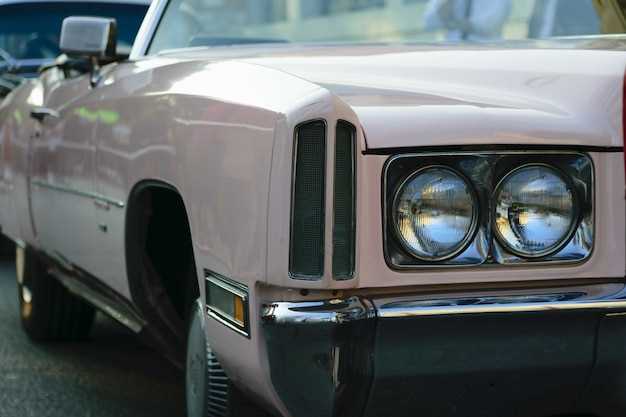
During the late 1970s, the automotive industry witnessed a notable shift in consumer preferences, leading to a significant decline in the popularity of convertibles. This trend can be attributed to a convergence of economic factors and changing societal attitudes towards car ownership and utility. As the decade progressed, the allure of open-top driving began to fade, overshadowed by mounting concerns regarding fuel efficiency, safety, and practicality.
The oil crisis of the 1970s fundamentally altered the landscape of the automobile market. Consumers, faced with soaring fuel prices, became increasingly conscious of the operational costs associated with owning a vehicle. Convertibles, often perceived as less fuel-efficient than their coupe counterparts, fell out of favor as buyers gravitated towards more economical options. Manufacturers, in response, began to scale back production, leading to a dramatic decline in convertible offerings.
Moreover, safety regulations were becoming more stringent during this period, and convertibles often struggled to meet the new standards. Features that made these cars appealing, such as lightweight materials and an open cabin design, posed challenges in terms of crash safety, further discouraging consumer interest. As the market evolved, it became clear that the romance of convertibles was dimming against a backdrop of practicality and responsibility, marking a pivotal moment in automotive history.
Safety Features: What Prompted the Shift Away from Convertibles?

In the late 1970s, the automotive landscape began to evolve significantly, driven in part by the growing emphasis on safety features. Convertibles, once a symbol of freedom and leisure, faced increasing scrutiny as concerns about passenger safety gained traction. The design of convertibles inherently posed risks that traditional hardtop vehicles did not, prompting manufacturers and consumers alike to reconsider their desirability.
One of the primary safety concerns associated with convertibles was the lack of structural integrity. Unlike their rigid counterparts, convertibles lacked a fixed roof, which compromised rollover protection. In the event of an accident, passengers in a convertible were at a greater risk of severe injuries or ejection from the vehicle. As crash test standards became more rigorous, the vulnerability of these vehicles became increasingly apparent.
Moreover, the advent of more advanced safety features during this era contributed to the decline of convertibles. Innovations such as airbags, anti-lock braking systems, and reinforced passenger compartments were primarily developed for sedans and coupes, leaving open-top vehicles behind in the evolution of car safety. Consumers began to prioritize these features, leading to a preference for vehicles that offered better protection in the event of collision.
The changing regulatory environment also played a significant role. As governments around the world imposed stricter safety regulations, manufacturers were forced to adapt their designs. Convertibles, with their inherent limitations, struggled to meet these new standards, leading to a decrease in production and sales. Automakers began to focus on models that could effectively integrate advanced safety technologies, ultimately sidelining the convertible design.
Additionally, changing consumer preferences influenced the shift away from convertibles. The energy crisis of the late 1970s led to an increased demand for fuel-efficient and practical vehicles. As buyers gravitated towards more economical options, convertibles, often associated with luxury and performance, lost their appeal. Safety concerns, combined with economic factors, solidified the decline of convertibles in favor of vehicles that could offer both practicality and security.
Market Trends: How Economic Factors Influenced Convertible Sales?
The late 1970s marked a significant decline in convertible car sales, largely influenced by various economic factors. One of the primary concerns during this period was the increasing cost of fuel. The oil crisis of 1973 led to skyrocketing gas prices, forcing consumers to reconsider their purchasing decisions. Convertibles, often associated with luxury and performance, were viewed as less practical amid rising fuel costs.
Additionally, safety concerns began to surface prominently. As regulations around vehicle safety tightened, manufacturers faced pressure to enhance the structural integrity of their models. Convertibles, which typically have less rigidity than their hardtop counterparts, struggled to meet the evolving safety standards. This shift in emphasis led potential buyers to prefer safer, more robust vehicles, further stifling convertible sales.
Economic instability also played a role in shaping consumer preferences. The late 1970s witnessed a recession, prompting buyers to prioritize budget-friendly and fuel-efficient vehicles over the allure of open-top driving. The financial burden of owning a convertible, alongside practical considerations like maintenance and insurance costs, pushed many consumers away from this segment of the market.
Ultimately, the combination of fuel prices, safety concerns, and economic instability significantly contributed to the decline in convertible sales during this era. As consumers sought more practical and economically viable options, the convertible market faced challenges that would reshape its landscape for years to come.
Consumer Preferences: What Changed in Buyer Attitudes Towards Convertibles?

In the late 1970s, a notable shift occurred in consumer preferences regarding convertibles, largely influenced by changing buyer attitudes and societal trends. Several key factors contributed to this decline in popularity.
- Concerns About Safety:
One of the most significant changes in consumer attitudes was the growing emphasis on safety features in vehicles. Buyers became increasingly aware of the vulnerabilities associated with convertibles, which typically offered less structural rigidity than hardtop models. The perception of convertibles as less safe contributed to their decline.
- Economic Factors:
The late 1970s were marked by economic instability, including rising fuel prices and inflation. Consumers began to prioritize practicality and fuel efficiency over style and luxury. This economic shift led many to favor more economical vehicles, pushing convertibles further down in the hierarchy of consumer preferences.
- Changing Lifestyle Preferences:
As family dynamics evolved, the need for larger and more versatile vehicles increased. Consumers started to favor sedans and SUVs that could accommodate families and provide safety and comfort. The convertibles, often seen as sports cars, lost appeal among practical-minded buyers.
- Shifts in Fashion Trends:
Automotive fashion also played a critical role in changing consumer attitudes. The late 1970s saw a rise in more conservative car designs, and the flamboyant style of convertibles became less desirable. Buyers began gravitating towards models that reflected a more subdued aesthetic.
Collectively, these factors illustrate the complex landscape of consumer preferences during the late 1970s. As safety concerns, economic pressures, changing lifestyles, and evolving fashion trends took precedence, convertibles faced a significant decline in buyer interest.











